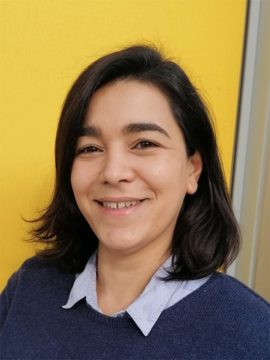Online.
Send an email to Ania Goncalves to get the link
Title : Altered neuronal activity in the hippocampal CA3 region in an in vitro model of tauopathy

Ania Goncalves
Team Mulle
IINS
Thesis supervisor: Sandrine Pouvreau, Chargée de recherche, CNRS
Defense in english
Summary
Alzheimer’s disease (AD) is a neurodegenerative disorder characterized by brain depositions of amyloid plaques and tau tangles. The propagation of the tauopathy correlates strongly with the cognitive decline in patients, highlighting the critical role of tau in AD. Yet, the mechanisms linking tauopathy and impaired brain functions remain elusive. Different in vitro and in vivo animal models have been used to study the pathological features related to tauopathies, such as synaptic dysfunction, impaired neuronal activity and neuronal loss. Nevertheless, it is still challenging to find a model that allows the evaluation of the tau toxicity in a complex neuronal circuit with proper spatio-temporal resolution. Hence, in this work, we developed a physiologically relevant ex vivo model of ADlinked tauopathy, based on organotypic hippocampal slices, for the investigation at a proper spatiotemporal resolution of progressive impairments in neuronal physiology. We took advantage of the seeding properties of misfolded tau to induce tau pathology in organotypic hippocampal slices, considering that the hippocampus is particularly vulnerable in AD. The hippocampal organotypic slices model shows a progressive accumulation of hyperphosphorylated tau and the main features of the disease such as accumulation of other pathological forms of tau, neurodegeneration and selective cellular vulnerability. Our in vitro model recapitulates the development of the disease observed in old transgenic mice. Additionally, our model displays altered neuronal activity at late stages of the disease, along with the accumulation of hyperphosphorylated tau and
neuronal loss in CA3. Remarkably, the pathological pattern of neuronal activity, including hyperactivity and hypersynchrony, could be reproduced in WT slices by simultaneous inhibition of GABAA and GABAB transmission. Our data suggest that impairment of GABAergic signalling underlies the altered neuronal activity found in tau pathology.
Keywords: tau protein, Alzheimer’s Disease, network activity
Jury
Président :
Dr. Giovanni MARSICANO, Directeur de Recherche, INSERM
Rapporteurs
Dr. Alexis BEMELMANS, Chargé de recherche, CEA
Dr. David BLUM, Directeur de Recherche, INSERM
Examinateurs
Dr. Ilse DEWACHTER, Professeur, University Hasselt
Dr. Olivier NICOLE, Chargé de recherche, CNRS
Invité
Dr. Juan PITA-ALMENAR, Senior Scientist, Janssen Pharmaceutica

